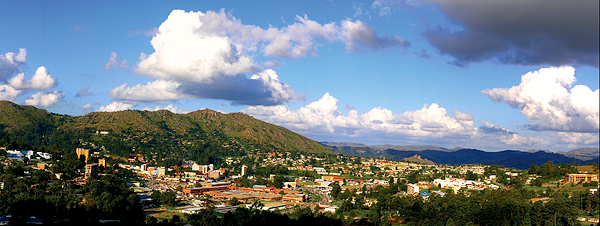
ADVENTURE
AIDS
AIRLINES
AIRPORT
AIRPORT BUS
ARCHAEOLOGY
ARCHITECTURE
ARCHIVES
ART GALLERIES
BANKS
BIRDING
BOOK EXCHANGE
BUDGET TRAVEL
BUSES
BUSHFIRE
BUSHMAN PAINTINGS
BUSHMEN
CAMPSITES
CAR HIRE
CARS and DRIVING
CATTLE
CLIMATE
COLONIALISM
CRIME
DRUGS
ECONOMY
HISTORY
IMMIGRATION
KINGS
MBABANE
NATURE RESERVES
POLICE
RITUAL CEREMONIES
SIBEBE TRAILS
TOUR COMPANIES
TRAVEL AGENCIES
Index to information in the guide
The capital of Swaziland is a pleasant city of around 60 to 80 000 thousand people. Ringed by mountains at an altitude of 1200 meters Mbabane has a temperate climate for most of the year. Winters are generally clear with warm days and cold nights, summers are hot with a lot of rain and misty days. Founded by a canteen-keeper named Mickey Wells in the mid 1880's with one hut, Mbabane became the capital in 1903 and was the seat of the British colonial administration. The British preferred it to Bremersdorp for their capital as the mountain climate was far cooler. Besides the Boers had burned Bremersdorp to the ground during the Anglo-Boer War. The Cape-Dutch style building in Gwamile Street was the British administrative center of the country.
After independence Mbabane grew substantially as Swaziland's population increased, standards of living rose and people moved to the towns. There are two shopping centers, a clinic, a market, doctors, dentists and many of the services that visitors are likely to need. There is one small low cost hotel in the center of town, a backpackers lodge and a medium price hotel on the outskirts. The town is generally crime free during the day. At night avoid dark streets, particularly if you are alone. Park your car in a secure place, the next best is near to a uniformed security guard.
